#mingei movement
Text
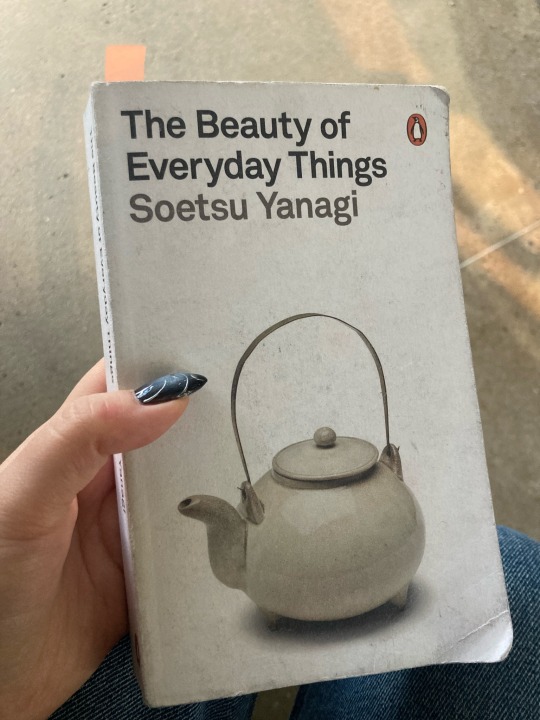
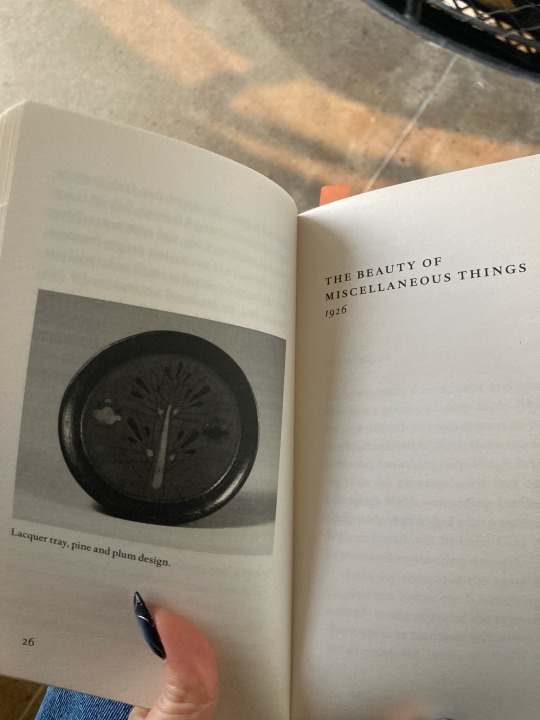
finished this collection of essays by Soetsu Yanagi today and i recommend it a lot if you’re interested in traditional japanese art:) it made me appreciate common folk crafts a lot more
#excuse the dirty covers i carry it everywhere and it shows#anyway i enjoyed this book a whole lot since i was interested in the mingei movement in the first place#book recommendations#essays#art history#mingei movement#japanese art#ispeak
5 notes
·
View notes
Text
🏺 Leosagi pottery au 🏺
The brain worms are worming but it’s something I actually know a thing or two about so now I yap! :U
🪱 Ok ok, hear me out . . .
Au Summary: Leo’s doing some hot girl shit and by that I mean being depressed and locking himself in his room, rotting away.
Mikey convinces Leo to take a pottery class with him & drags his ass along
Mikey’s great at it (obvi) but Leo’s having trouble and hates it
The instructor comes by and helps him out (aka Miyamoto Usagi) and pulls a “Ghost” (he actually doesn’t, he just helps him center clay, but Leo is convinced “it was for sure a Ghost moment” lol) (also hence the shitty doodle I posted earlier)
And now that this bitch has a hot instructor, he’s all excited to get out of his room and do pottery
I mean he’s still depressed but now he’s trying to rizz up his instructor lol
Pottery Talk: Im having loads of fun thinking about Usagi’s pottery style
Let me explain-💅
The first brain-worm thought, “What if I modeled Usagi off of Shoji Hamada” (aka one of my favorite potters) 🪱

It sooo preeetttty 😫 The calligraphy-like brush strokes, the colors, the simplicity and the mingei movement, it all just SCREAMS Usagi!!
A little more context: Shoji Hamada was THE guy in the Mingei (folk-art) movement which emphasized using local resources! Dude was making beautiful work using the clay in the dirt. No fancy shmancy imported porcelain or complicated designs with intricate gold enamel. The connection/appreciation of nature and spirituality. The rejection of cheap mass-produced/industrialized ceramics, and embracing the imperfections of each individual piece, knowing it was carefully crafted by some unknown craftsman with years of experience and skill (not saying Shoji Hamada was unknown, but he advocated & supported unknown artists) It all just reminds me so much of Usagi.
I wanted to explore more styles, like abstract/sculptural and what-not, but I think Usagi would be a functional potter. 100% (lowkey was thinking of making Leo have a more sculptural/abstract/handbuilding/intuition kind of style to contrast with Usagi but idk yet)
I’m still looking at different artists and their styles
(Btw, this would all take place in the rottmnt universe but it would be really interesting if it took place in the Edo period. Japan has such a rich history with pottery! Then I’d get to use Edo period type pottery which is also super fun, hmmmm . . .)
The brainworms really need to let me sleep . . . 🪱
#pottery au#leosagi#Leosagi fic idea#rottmnt#rottmnt Leo#miyamoto usagi#usagi miyamoto#i’m totally normal about this#will i ever write this?#prob not#but I really want to#i should go to bed#I’ve got class in the morning#usagi yojimbo
13 notes
·
View notes
Text


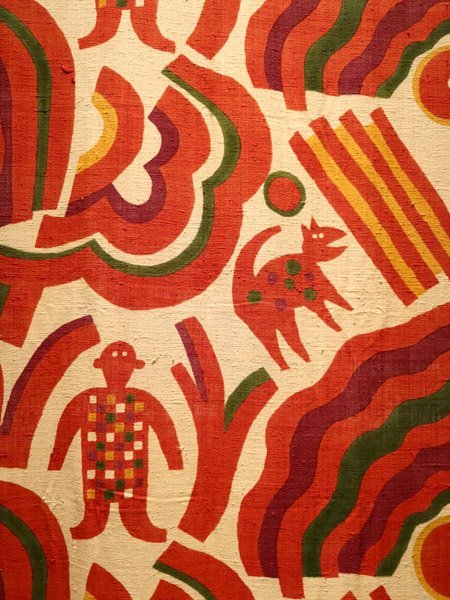

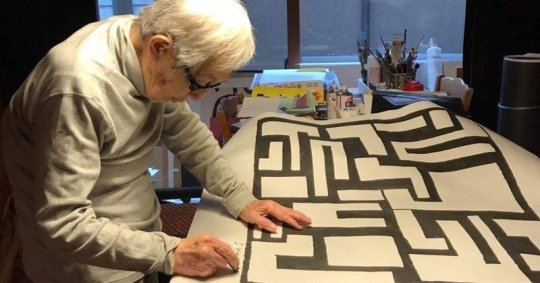
Samiro Yunoki was born in 1922 to a family of artists. His strikingly modern works are steeped in Japanese tradition and demonstrate a mastery of the stencil dyeing technique, katazome which can be literally translated as ‘dyeing from a form’. This skill was taught to Yonoki by the legendary dyeing artist, Keisuke Serizawa (1895 – 1984) whom he studied under in the 1960s, having had his interest in Mingei craft sparked whilst working at the Ohara Museum in Kurashiki in the 1940s. The Mingei folk craft movement was advocated by Soetsu Yanagi, his work was often exhibited at the gallery where Yunoki worked, alongside that of his friends Kanjiro Kawai, Shoji Hamada and Bernard Leach.
Yunoki commented: “Dyeing used to be necessary because all the people wore kimono. But now we are living in totally different situation. I guess there are many dyeing artists who feel difficulty in getting jobs. Existing traditional crafts are all exquisite handiwork. It means that Japanese elaborate technologies support the basis of traditional crafts. Although it’s not bad thing to appreciate those crafts as artworks, I think it’s boring. Crafts are not just a decoration. The essence of traditional crafts is the solid motivation of artists backed by genuine skills and materials. Moreover, it wouldn’t be good if ostentatious decorations covered and hide artists’ humanities and vitalities, or if the crafts became too practical. So I think we should broaden the definition of art and call all the creation “art” with no distinction between “fine art” and “crafts”.”
https://www.cover-magazine.com/.../textiles-samiro.../
39 notes
·
View notes
Text
Arts and Crafts Movement

This is a movement with such gorgeous works of art! Although it's not very well-known, we all know proponents of this movement, such as the famous printmaker William Morris.
The Arts and Crafts Movement was a trend in decorative and fine arts, which originated in the British Isles and spread to Europe, North America and even as far as Japan.
It was inspired by the ideas of historian Thomas Carlyle, art critic John Ruskin, and designer/printmaker William Morris.
This movement was a reaction to the plain and mass-produced items of the industrial revolution. Instead, the proponents of this movement focused on traditional design and strove for Gothic architecture that represented Christian values of the Middle Ages.
Principles of the Arts and Crafts Movement-
The Arts and Crafts Movement believed that design should be useful as well as beautiful. The proponents disliked ornate designs which served no purpose, as seen on industrially-produced items of the time. They believed that thought should be put into decoration, such that it should enrich the essential construction.
As William Morris said, “Have nothing in your houses that you do not know to be useful or believe to be beautiful.“
Here's some art created by people of this movement- William Morris (he made primarily wallpaper and home furnishings)

his daughter May Morris (took charge of her father's business, also did embroidery)

John Ruskin (mainly a painter)

Edwin Lutyens (yes, that Lutyens)(We all know he's an architect. Delhi people wya)

ok, I'm kidding, here's an Arts and Crafts-style house made by Lutyens

Seriously though, I have no idea how this is an Arts and Crafts-style house. Architecture looks all the same to me.
What happened to the movement?
By 1910s, the movement had grown popular and the Arts and Crafts style had permeated all typed of arts and home goods. Handmade items in the style were especially in vogue. This caused many handmade artifacts of middling quality to be produced and sold, which caused handmade items to be seen as inferior to machine-made items, which were increasing in quality by the day.
Ultimately, by 1914 the Arts and Crafts Movement was running out of funds and steam, and eventually it stopped the commercialization of its goods in favour of purist handwork. Eventually it was replaced as a prevailing trend by Modernism in the 1930s.
Enduring Influences of the Movement
In 1920s Japan, Yanagi Soetsu became influenced by the ideals of the Arts and Crafts movement. He went on to create the Mingei movement. While its principles are similar to the Arts and Crafts Movement, to discuss it would require a post of its own.
The influences of the Arts and Crafts Movement can be seen in 1940's British craft work, such as in Utility Furniture of the 1940s. This was partially due to the ideas brought over by Bernard Leach from Japan, where the movement had been thriving.
#art#arts and crafts movement#william morris#edwin lutyens#architecture#paintings#embroidery#wallpaper
6 notes
·
View notes
Photo
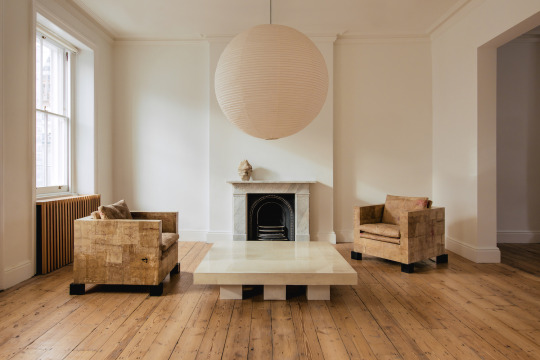
Paper is a minimalist furniture collection created by London-based designer David Horan for Béton Brut. Inspired by the French decoupage craft and Japanese Mingei movement, Horan has created a stunning collection of seating, a coffee table, and lighting by layering handmade Japanese paper, which forms a new applied vegan vellum.
23 notes
·
View notes
Text



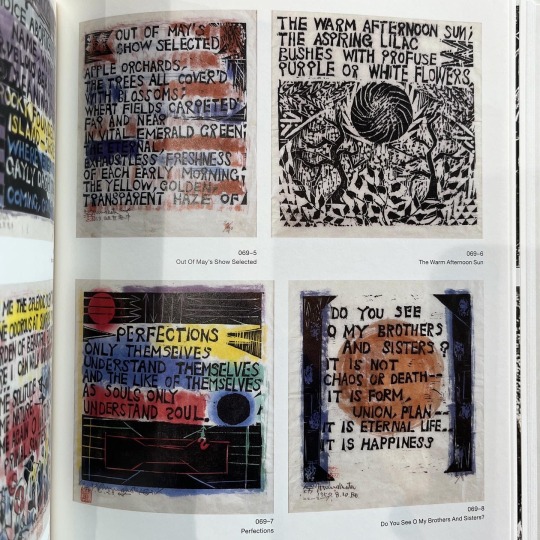

#finishedbooks The Making of Munakata Shiko by various. Picked this up from the retrospective exhibition at MoMAT. When I used to write museum reviews for Tokyo Art Beat I got these exhibition books for free so have a quite a collection going. The joy of these books is usually just in being able to get in print a bilingual book from artists that typically wouldn't be published in the west. Definitely the case with this book but also in last books that featured Yamada Masaaki, the Gutai or Dansakwa movements, or someone soon to get there flowers in a Tomo Gokita just off the top. So enter Munakata Shiko an artist who I came into through the Mingei folk art movement that he was associated with. The movement was founded by Yanagi Soetsu has a lot of amazing aesthetic philosophy books out there that I came to through his son who the modern product designer Sori Yanagi (most of my appliances are designed by him). Munakata I recognized most from the covers of my English translations of Tanazaki Junichiro. So with that a really great show that shows his whole range from the various religious and folk art woodblock print series to his mid career when he became a bit known collaborating with the major literary figures at the time to his twilight where Ken Doman captured with his decaying eye site the wonderfully beautiful character he became creating with his face right up to the work. Was really happy to get a chance to go to the opening. The show is up for sometime do yourself a favor and check it out.
6 notes
·
View notes
Text
Mingei Interior Design Decor Ideas For Your Modern House

Mingei design remains relevant and inspiring due to its focus on simplicity, craftsmanship, and the beauty of everyday objects. The beauty of Mingei in your own space, starts with small changes that reflect the movement’s principles. For those interested in learning more, consider exploring books, websites, or artisans who specialize in Mingei design. Use Mingei Interior Design Decor to bring that unique touch to your modern apartment or villa. In this blog, we will explore how to incorporate Mingei interior design decor into our modern homes.
#Mingei interior design#best interior designers in dubai#residential interior design dubai#professional interior designer
0 notes
Text















TOKYO, Roppongi.
Mori Art Museum, Afro-Mingei exhibition.- Theaster Gates.
This exhibition wasn’t my favourite, though I still enjoyed exploring it. The gallery visit featured Gates’ work from the last twenty years, celebrating the beauty of objects and various crafts. Gates compared the Mingei movement to the “Black is Beautiful” movement of the 1960s-1980s, highlighting cultural resistance. However, I preferred the MAM research exhibit, “The Dawn of Taiwanese Video Art in the 1980s-1990s” by Lin Chun-Chi. These videos explored expression, thought, documentation, texts, and chronologies, examining the relationship between Taiwanese and Japanese art.
Had a great lunch, walked around, shopped.
0 notes
Text
Discover 5 Captivating Art Exhibitions of This Week
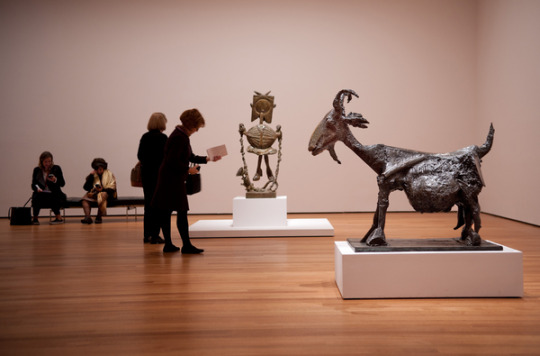
Immerse yourself in a world of captivating art exhibitions. Discover the thought-provoking "Father and Son" by Akram Zaatari, experience the cultural fusion of "Afro-Mingei" by Theaster Gates, and delve into the atmospheric paintings of Matthew Krishanu. Get captivated by Patrick Martinez's powerful narratives and pay homage to the Harlem Renaissance at The Metropolitan Museum of Art. Join us on this artistic journey where culture, history, and creativity intertwine.
Akram Zaatari: Father and Son
When: April 23 - July 13
Where: Thomas Dane, Naples
Akram Zaatari, an artist with a passion for unearthing Lebanon's history, presents a unique exhibition that focuses on restitution. Through the use of text, historical documents, and photographs, Zaatari recreates objects and ties that have been lost over time. The exhibition showcases a range of works spanning two decades, including the recent series "Father and Son," which reunites two Phoenician sarcophagi through 3D scans, film, and photographs. With a focus on reconnected untold stories with the present, this exhibition reflects Zaatari's exploration of the recording and forgetting of history.
For more visit Official Website
Theaster Gates: Afro-Mingei
When: April 24 - September 1
Where: Mori Art Museum
Theaster Gates, renowned for his sculptures and ceramics, presents his first solo exhibition in Japan and the largest ever in Asia. The exhibition explores the concept of "Afro-Mingei" as the central theme, showcasing existing and never-before-seen works that demonstrate the influence of Japanese culture on Gates' practice. With a focus on marginalized communities, Gates' multimedia approach incorporates installations, neon works, and painted pieces to create a powerful visual language.
For more visit Official Website
Matthew Krishanu: 'The Bough Breaks'
When: April 26 - June 23
Where: Camden Art Centre
Matthew Krishanu's atmospheric paintings delve into themes of migration and loss. This exhibition features images of the artist and his brother perched on the branches of a banyan tree, symbolizing both safety and the looming potential of collapse. Krishanu's emotionally charged work captivated audiences in his previous exhibition at Whitechapel Art Gallery. Don't miss the opportunity to experience his beautiful, poignant paintings.
For more visit Official Website
Patrick Martinez: Histories
When: April 3 - September 1
Where: Dallas Contemporary
Dallas Contemporary presents the largest show of painter Patrick Martinez's works, showcasing brand-new pieces and a selection of his past works. Martinez's art aims to shed light on marginalized Latinx and BIPOC communities through a variety of mediums, including painting, installations, neon works, and more. The exhibition serves as a platform for unifying immigrant and BIPOC communities through a shared visual language.
For more visit Official Website
The Harlem Renaissance and Transatlantic Modernism
When: February 25 - July 28
Where: The Metropolitan Museum of Art
The Metropolitan Museum of Art pays homage to the Harlem Renaissance, a significant Afro-American movement of the interwar period. This expansive exhibition features over 160 photographs, paintings, and sculptures from artists integral to the artistic and social movement. The artworks are juxtaposed with European works by Henri Matisse and Edvard Munch, offering a unique perspective on the African diaspora. Don't miss this celebration of cultural and artistic exchange.
For more visit Official Website
To get more updates on Arts and Culture visit WhatsOn.guide
Read the full article
0 notes
Text
SDXL风格提示词-movements
Abstract Expressionism_抽象表现主义
Abstract Illusionism_抽象幻觉
Academic Art_学术艺术
Acid Art_酸性艺术
Action Painting_动作绘画
Analytic Cubism_分析性立体主义
Appropriation Art_挪用艺术
Arabesque_阿拉伯花纹
Art and Language_艺术与语言
Art Deco_装饰艺术
Art Informel_不定型艺术
Art Photography_艺术摄影
Arte Povera_Arte Povera
Ashcan School_阿什坎学校
Automatism_自动化
Baroque_巴洛克风格
Bauhaus_包豪斯
Bio Art_生物艺术
Brutalism_野蛮主义
Byzantine_拜占庭的
Calligraffiti_涂鸦
Chiaroscuro_明暗对照
Classicism_古典主义
Cloisonnism_景泰蓝主义
Color Field_颜色字段
Computer Art_计算机艺术
Conceptual Art_概念艺术
Constructivism_建构主义
Contemporary_属同时期的
Cubism_立体主义
Dadaism_达达主义
Dataism_数据主义
De Stijl_De Stijl
Digital Art_数字艺术
Divisionism_分裂主义
Environmental Art_环境艺术
Expressionism_表现主义
Fauvism_野兽派
Feminist Art_女权艺术
Folk Art_民间艺术
Futurism_未来主义
Generative Art_衍生艺术
Glitch Art_故障艺术
Gongbi_工笔画
Gothic_哥特式
Graffiti Art_涂鸦艺术
Gutai Group_古泰集团
Haptic Art_触觉艺术
Hard-edge Painting_硬边绘画
Hyperrealism_超现实主义
Impressionism_印象主义
Installation Art_装置艺术
Intimism_亲密主义
Italian Futurism_意大利未来主义
Japonism_日本主义
Kinetic Art_机动艺术
Kitsch_媚俗
Land Art_大地艺术
Lettrism_Lettrism
Literati Painting_文人画
Lowbrow Art_低俗艺术
Luminism_发光
Lyrical Abstraction_抒情抽象
Magic Realism_魔幻现实主义
Mail Art_邮件艺术
Mannerism_习性
Medieval_中世纪
Metaphysical Painting_玄学绘画
Mingei (Japanese Folk Art)Mingei(日本民间艺术) Minimalism极简主义
Modern_现代的
Mono-ha_物派
Monochromism_单色
movements.txt_movements.txt
Muralism_壁画主义
Narrative Art_叙事艺术
Na?ve Art_那?ve艺术
Neo-Dada_新达达
Neo-expressionism_新表现主义
Neo-Fauvism_新野兽派
Neo-Figurative Art_新具象艺术
Neo-Plasticism_新塑性
Neo-Romanticism_新浪漫主义
Neoclassicism_新古典主义
New Leipzig School_新莱比锡学派
New Media Art_新媒体艺术
New Objectivity_新客观主义
Nihonga (Japanese traditional painting)Nihonga(日本传统绘画) Op Art_Op艺术 Orphism奥弗斯主义
Outrenoir_外联
Outsider Art_域外艺术
Photorealism_写实主义
Pixel Art_像素艺术
Pointillism_Pointillism
Pop Art_波普艺术
Post-Impressionism_后印象派
Post-Painterly Abstraction_后期绘画抽象
Pre-Raphaelite Brotherhood_拉斐尔前派兄弟会
Precisionism_精准主义
Primitive Art_原始艺术
Psychedelic Art_迷幻艺术
Purism_纯粹主义
Realism_现实主义
Regionalism_地区主义
Renaissance_文艺复兴
Rococo_洛可可
Romanticism_浪漫主义
Russian Futurism_俄罗斯未来主义
Situationism_情境主义
Social Realism_社会现实主义
Socialist Realism_社会主义现实主义
Sound Art_声音艺术
Spatialism_空间主义
Spectralism_Spectraism
Street Art_街头艺术
Stuckism_反概念主义
Superflat_超扁平
Suprematism_至上主义
Surrealism_超现实主义
Symbolism_象征主义
Synchromism_同步性
Synthetic Cubism_合成立体派
Tachisme_心动过速
Tenebrism_Tenebrism
Tonalism_色调主义
Toyism_玩具主义
Transavantgarde_跨万特加德
Trompe-l'oeil_Trompe-l'oeil
Vector_矢量
Verism_Verism
Video Art_视频艺术
Virtual Art_虚拟艺术
Visionary Art_视觉艺术
Vorticism_旋涡主义
Wabi-sabi_Wabi sabi
Yamato-e_Yamato-e
Young British Artists_英国青年艺术家
Zhe School_哲学派
0 notes
Text
What is Japanese style jewelry?
Japanese style jewelry is characterized by a unique blend of traditional craftsmanship, cultural symbolism, and a modern aesthetic. Here are some key characteristics of Japanese style jewelry:

Cultural Symbolism: Japanese jewelry often incorporates symbols with deep cultural and spiritual meanings. Symbols such as cherry blossoms, cranes, dragons, and other motifs may be used to convey messages of beauty, longevity, and good fortune.
Nature-Inspired Designs: Japan's natural landscape and its changing seasons greatly influence jewelry design. Cherry blossoms, plum blossoms, bamboo, and other elements from nature are frequently depicted in Japanese jewelry, reflecting a connection to the natural world.
Wabi-Sabi Aesthetics: Wabi-sabi is a Japanese aesthetic philosophy that embraces imperfection, impermanence, and simplicity. Japanese jewelry may embody wabi-sabi principles, featuring understated elegance, asymmetry, and a focus on the beauty of natural materials.
Cultural Heritage: Traditional Japanese craftsmanship, such as origami (paper folding), washi paper art, and traditional textile patterns, often inspires jewelry designs. This connection to cultural heritage adds a sense of history and authenticity to Japanese jewelry.
Precious Metals and Gemstones: Japanese jewelry often features high-quality craftsmanship using precious metals such as gold and silver. Gemstones, particularly those with symbolic meanings, may also be incorporated into designs.
Mingei Movement Influence: The Mingei movement, which emerged in Japan in the early 20th century, celebrated folk crafts and traditional arts. This movement had a significant impact on various artistic forms, including jewelry, promoting handmade and artisanal pieces.
Innovative Designs: While rooted in tradition, Japanese jewelry designers are also known for their innovation. Contemporary Japanese jewelry may feature avant-garde designs, experimental materials, and cutting-edge techniques.
Ceramics and Porcelain: Japan has a rich tradition of ceramic arts, and this influence is often seen in jewelry. Ceramic beads, porcelain elements, and traditional pottery techniques may be incorporated into Japanese jewelry designs.
Geometric and Symmetrical Designs: Japanese jewelry often exhibits a sense of balance and symmetry. Geometric shapes and patterns, whether inspired by traditional motifs or modern design principles, are common in Japanese jewelry.
Kimono and Obi Influence: The intricate patterns and vibrant colors of traditional Japanese garments, such as the kimono and obi, may influence jewelry designs. Elements of textile patterns, embroidery, and knotwork are sometimes translated into jewelry.
Tsuba (Sword Guard) Motifs: Traditional Japanese sword guards, known as tsuba, are sometimes used as design inspirations in Japanese jewelry. These motifs often feature intricate metalwork and symbolic elements.
In summary, Japanese style jewelry is a harmonious blend of traditional craftsmanship, cultural symbolism, and contemporary design elements. Whether inspired by nature, cultural heritage, or modern aesthetics, Japanese jewelry exhibits a unique and often timeless appeal.
0 notes
Link
0 notes
Photo
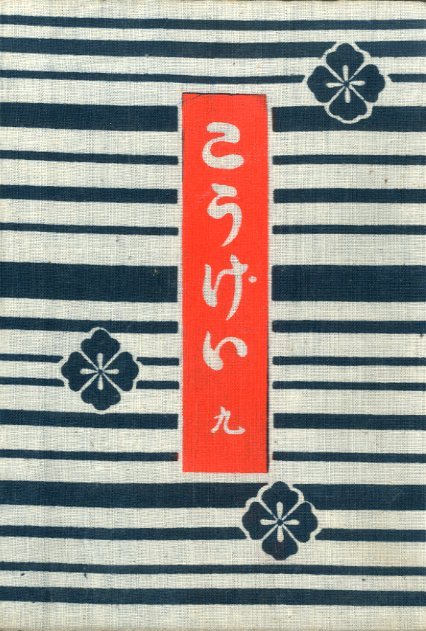


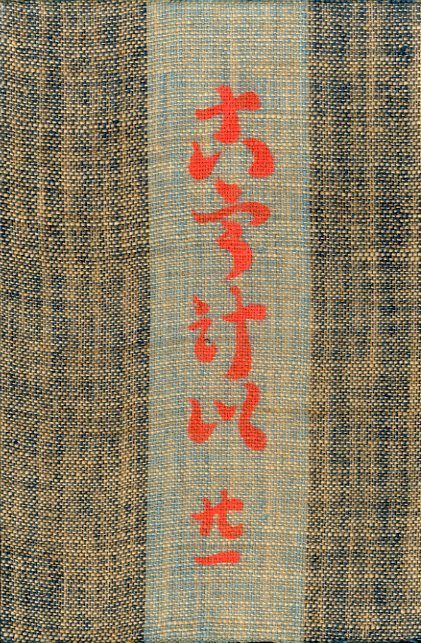






"Kogei" was published by Soetsu Yanagi from Jurakusha in 1931, and later changed to the Japan Folk Art Association, and continued until the final issue of issue 120 in 1951. Many of the bindings, which are said to be crafts because of their beauty, are made by decorating the designs of Serizawa Serizawa with hand-woven cloth or urushi-e, and there are also those bound with Munakata Shiko 's prints. The text was written by Soetsu Yanagi, Kanjiro Kawai , Kenkichi Tomimoto , Shoji Hamada and others using various Japanese papers, and played an important role as a bulletin for the Mingei movement to enlighten the "beauty of life".
329 notes
·
View notes
Photo







Samiro Yunoki was born in 1922 to a family of artists. His strikingly modern works are steeped in Japanese tradition and demonstrate a mastery of the stencil dyeing technique, katazome which can be literally translated as ‘dyeing from a form’. This skill was taught to Yonoki by the legendary dyeing artist, Keisuke Serizawa (1895 – 1984) whom he studied under in the 1960s, having had his interest in Mingei craft sparked whilst working at the Ohara Museum in Kurashiki in the 1940s. The Mingei folk craft movement was advocated by Soetsu Yanagi, his work was often exhibited at the gallery where Yunoki worked, alongside that of his friends Kanjiro Kawai, Shoji Hamada and Bernard Leach.
Yunoki commented: “Dyeing used to be necessary because all the people wore kimono. But now we are living in totally different situation. I guess there are many dyeing artists who feel difficulty in getting jobs. Existing traditional crafts are all exquisite handiwork. It means that Japanese elaborate technologies support the basis of traditional crafts. Although it’s not bad thing to appreciate those crafts as artworks, I think it’s boring. Crafts are not just a decoration. The essence of traditional crafts is the solid motivation of artists backed by genuine skills and materials. Moreover, it wouldn’t be good if ostentatious decorations covered and hide artists’ humanities and vitalities, or if the crafts became too practical. So I think we should broaden the definition of art and call all the creation “art” with no distinction between “fine art” and “crafts”.”
https://www.cover-magazine.com/.../textiles-samiro.../
15 notes
·
View notes
Text
Vase by Toshiro Ono

Beautiful vase by Toshiro Ono with original wooden box with Ono's signature. Very nice piece.
Toshiro Ono joined MIngei movement (folk art movement) with Muneyoshi Yanagi in 1931, and he was taught by Kanjiro Kawai, Shoji Hamada and Bernard Leach.
H19.5cm x W12.5cm / 7.5cm
Toshiro Ono is an artist who doesn’t sign on his works.
Not signing on works is kind of Mingei philosophy.
Kanjiro Kawai and Shoji Hamada (main members of Japanese Mingei (Folk) movement) , one of the most famous and important Japanese potters, never signed his works either.
They did not like their works to be treated ostentatiously as "works of art. This was because they believed that beautiful things are never special. Beautiful things are not something that can be created only by special people, but also reside in the handiwork of unknown craftsmen.
+SHOP+
https://kinsen.tokyo/collections/vase
6 notes
·
View notes
Photo

Hara: A Line at the Foot of Mt. Fuji (Suso ichimonji), No. 14 from the series "Munakata's Tokaido (Tokaido Munakata hanga)", Munakata Shikô, 1963, Art Institute of Chicago: Asian Art
This and the other 61 prints in the series were the result of seven sketching trips along the Tôkaidô Road that Munakata Shikô undertook between April 1963 and February 1964. The Tôkaidô Road connected Tokyo (then Edo) to Kyoto in the premodern period, and its scenery and post towns were immortalized by print artists such as Utagawa Hiroshige. Taking the idea of Hiroshige’s famous series Fifty-Three Stations of the Tôkaidô Road as his basis, Munakata set out to capture the humanity of encounters along the road from a modern perspective. Hara: A Line at the Foot of Mount Fuji is the artist’s emotional response to the wonderment and magnitude of Japan’s highest peak. Artist Biography:Munakata Shikô (1903-75) was one of the most distinguished Japanese printmakers of the twentieth century, renowned for combining bold imagery with traditional subject matter. Born in the remote northern province of Aomori, Munakata moved to Tokyo and became a member of the Creative Print (Sôsaku Hanga) movement. In contrast to the collaborative process of traditional ukiyo-e, Creative Print artists designed, carved, and printed their own woodblocks. Within this movement, Munakata developed his own exhuberant style of printmaking. Extremely nearsighted, he kept his face almost at the surface of the woodblock when carving, and could rarely view his art in its entirety. Yet he worked with an intutive spontaneity, wielding his carving tools with great speed. Munakata frequently drew his inspiration from traditional sources, such as Japanese mythology, theater, and literature. As he became involved with the twentieth-century Japanese Folk Art (Mingei) movement, Munakata also began to expore Buddhist imagery. He frequently included the word "stake" (saku, an offering of Buddhist pilgrims) in his titles, thus associationg his printmaking with a Buddhist devotional act. As Munakata wrote, "At every stage in my career I like to leave behind a print or picture as if I were offering a prayer." Munakata's approach and subject matter distinguish him from his Creative Print contemporaries, who favored figural studies and landscapes. Munakata's mastery of the woodblock medium was internationally recognized. He garnered top honors at several print biennials in the 1950s and received the highest artistic accolades in his own country. Japanese Print Purchase Fund
Size: 48.5 x 61.0 cm (19 1/16 x 24 in.)
Medium: Woodblock print; edition 5/10
https://www.artic.edu/artworks/23474/
4 notes
·
View notes